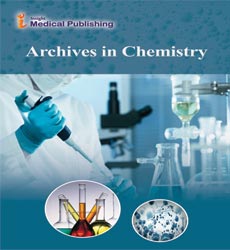Assessment of Photoreleasable Linkers and Light-Capturing Antennas on a Photoresponsive Cobalamin Scaffold
Abstract
Cobalamin has shown promise as a light-sensitive drug delivery platform owing to its ease of modification and the high quantum yields for drug photorelease. However, studies to date on the general photochemistry of alkyl cobalamins have primarily focused on methyl and adenosyl-substituted derivatives, the natural cofactors present in various enzymatic species. We describe the synthesis and photolytic behavior of cobalamin conjugates comprised of different combinations of fluorophores and β[1]axial ligands. In general, cobalamin conjugates containing β-axial alkyl substituents undergo efficient photolysis under aqueous conditions, with quantum yields up to >40%. However, substituents that are large and hydrophobic, or unable to readily support the presumed radical intermediate, suffer less efficient photolysis (<15%) than smaller, water-soluble, analogs. By contrast, quantum yields improve by 2-fold in DMF for cobalamins containing large hydrophobic β-axial substituents. This suggests that drug release from carriers comprised of membranous compartments, such as liposomes, may be significantly more efficient than the corresponding photorelease in an aqueous environment. Finally, we explored the impact of fluorophores on the photolysis of alkyl cobalamins under tissue-mimetic conditions. Cobalamins substituted with efficient photon-capturing fluorophores display up to 4-fold enhancements in photolysis relative to unsubstituted derivatives. In summary, we have shown that the photosensitivity of alkyl cobalamin conjugates can be tuned by altering the Co-appended alkyl moiety, modulating the polarity of the environment (solvent), and installing photon-capturing fluorophores onto the cobalamin framework.
Open Access Journals
- Aquaculture & Veterinary Science
- Chemistry & Chemical Sciences
- Clinical Sciences
- Engineering
- General Science
- Genetics & Molecular Biology
- Health Care & Nursing
- Immunology & Microbiology
- Materials Science
- Mathematics & Physics
- Medical Sciences
- Neurology & Psychiatry
- Oncology & Cancer Science
- Pharmaceutical Sciences
